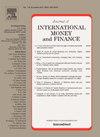Measuring transitory inflation: Implications for monetary policy and stock market volatility
IF 3.3
2区 经济学
Q2 BUSINESS, FINANCE
引用次数: 0
Abstract
We present a methodology for developing a transitory inflation (TI) measure that captures persistent deviations from mean inflation, distinguishing it from underlying inflation. First, we analyze the decay rate of TI as it reverts to stationary inflation, finding that convergence typically ranges between two to four years. We then examine the impact of TI on monetary policy, demonstrating that a surge in TI increases monetary policy uncertainty and is followed by interest rate hikes by the Federal Reserve. Furthermore, we investigate how TI influences key stock market outcomes and find its impact varies across sectors and by market capitalization; overall, higher TI is associated with lower asset prices, especially for small-cap stocks, and higher stock market volatility. We also identify rising oil prices as a significant driver of TI.
衡量暂时性通胀:对货币政策和股市波动的影响
我们提出了一种制定过渡性通胀(TI)指标的方法,该指标可捕捉与平均通胀的持续偏差,并将其与基本通胀区分开来。首先,我们分析了过渡性通胀回归静态通胀时的衰减率,发现其收敛时间通常在 2 到 4 年之间。然后,我们研究了 TI 对货币政策的影响,证明 TI 的激增增加了货币政策的不确定性,美联储随之加息。此外,我们还研究了 TI 如何影响股市的主要结果,发现其影响因行业和市值而异;总体而言,TI 越高,资产价格越低,尤其是小盘股,股市波动性越大。我们还发现油价上涨是 TI 的一个重要驱动因素。
本文章由计算机程序翻译,如有差异,请以英文原文为准。
求助全文
约1分钟内获得全文
求助全文
来源期刊

Journal of International Money and Finance
BUSINESS, FINANCE-
CiteScore
4.20
自引率
4.00%
发文量
141
期刊介绍:
Since its launch in 1982, Journal of International Money and Finance has built up a solid reputation as a high quality scholarly journal devoted to theoretical and empirical research in the fields of international monetary economics, international finance, and the rapidly developing overlap area between the two. Researchers in these areas, and financial market professionals too, pay attention to the articles that the journal publishes. Authors published in the journal are in the forefront of scholarly research on exchange rate behaviour, foreign exchange options, international capital markets, international monetary and fiscal policy, international transmission and related questions.
 求助内容:
求助内容: 应助结果提醒方式:
应助结果提醒方式:


